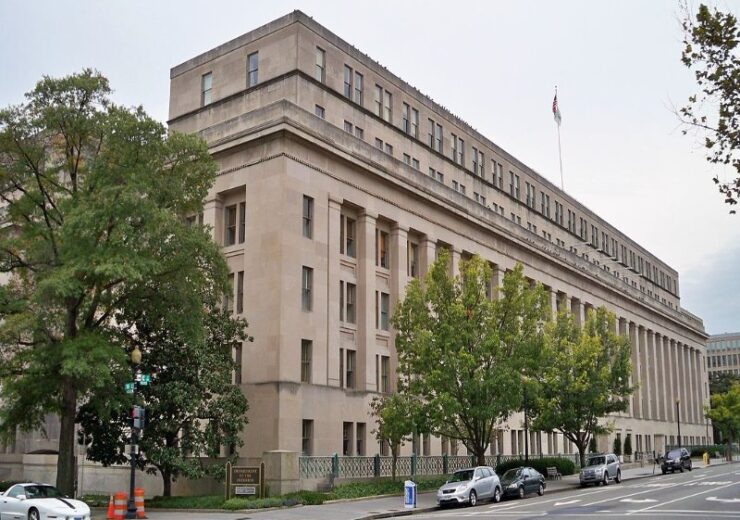The proposed rule seeks to revise outdated fiscal terms of the onshore federal oil and gas leasing program including bonding requirements, royalty rates and minimum bids

Exterior shot of the US Department of the Interior in Washington, DC. (Credit: Matthew G. Bisanz/ Wikipedia)
The US Department of the Interior has made an announcement regarding the revision of the Bureau of Land Management’s (BLM) oil and gas leasing regulations.
The proposed changes aim to achieve a well-balanced approach to development, ensuring fairness to taxpayers and safeguarding vital wildlife habitats and cultural sites from potential conflicts with drilling activities.
Under the proposed rule, the onshore federal oil and gas leasing programme would see significant revisions to its outdated fiscal terms. These revisions encompass bonding requirements, royalty rates, and minimum bids.
BLM director Tracy Stone-Manning said: “This proposal to update BLM’s oil and gas programme aims to ensure fairness to the taxpayer and balanced, responsible development as we continue to transition to a clean energy economy.
“It includes common sense and needed fiscal revisions to BLM’s programme, many directed by Congress.”
The proposed rule focuses on the vital modernisation of fiscal terms within the leasing programme. Historically, federal onshore oil and gas royalty rates have consistently remained lower than those of state-issued leases and federal offshore leases. The onshore royalty rates have not seen an increase in over 100 years until the Biden-Harris Administration assumed office. Additionally, bonding levels have remained unchanged for 60 years, while minimum bids and rents have stagnated for over 30 years.
The rule seeks to update and increase the minimum lease bond amount to $150,000 and the minimum statewide bond to $500,000. It also proposes the elimination of nationwide and unit bonds. The current bond amount of $10,000, established in 1960, is insufficient to incentivise companies to fulfil their reclamation obligations adequately. Additionally, it fails to cover potential costs associated with reclaiming a well should the operator fail to meet their obligations or declare bankruptcy.
It also proposed changes to royalty rates align with the provisions of the Inflation Reduction Act. Royalty rates for leases issued within ten years after the effective date of the Act would be set at 16.67%. After 16 August 2032, this rate will become the minimum royalty rate.
The rule intends to codify a provision of the Inflation Reduction Act that increased the national minimum bid from $2 per acre to $10 per acre, or fraction thereof. Additionally, after ten years, the minimum bid amount would be adjusted regularly for inflation.
Following the Inflation Reduction Act, the proposal outlines rental rates for leases issued within ten years after the Act’s enactment. It also introduced a new fee for expressions of interest.
The proposed rule also aims to steer oil and gas development away from critical wildlife habitats and cultural sites. Instead, it seeks to direct such development towards areas with existing infrastructure or high production potential.
